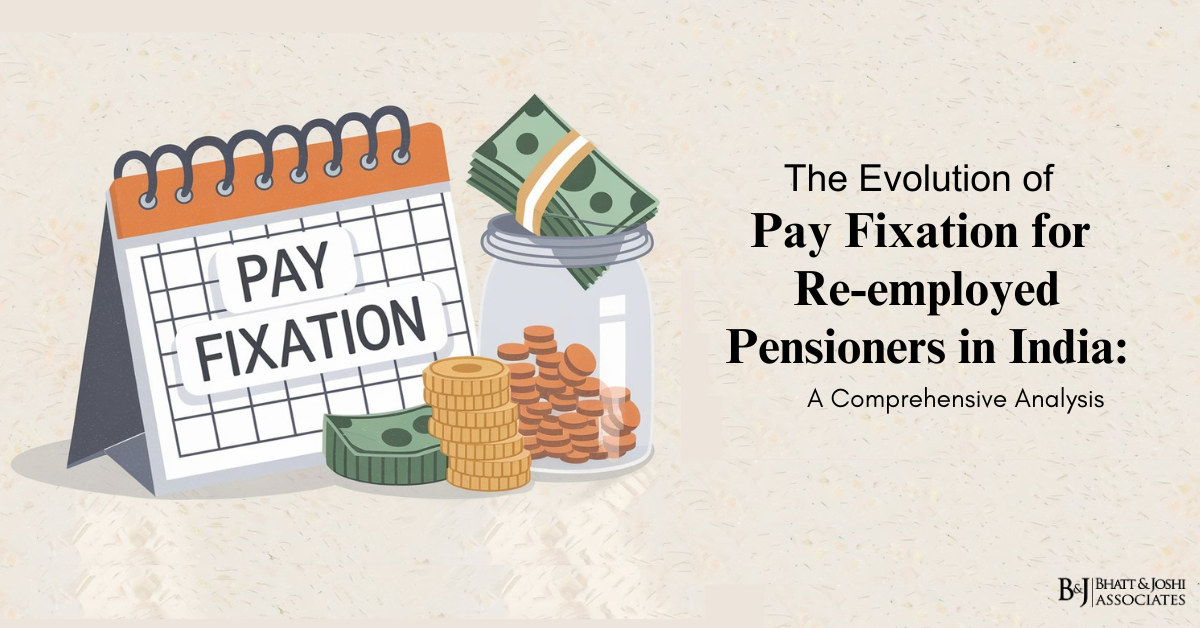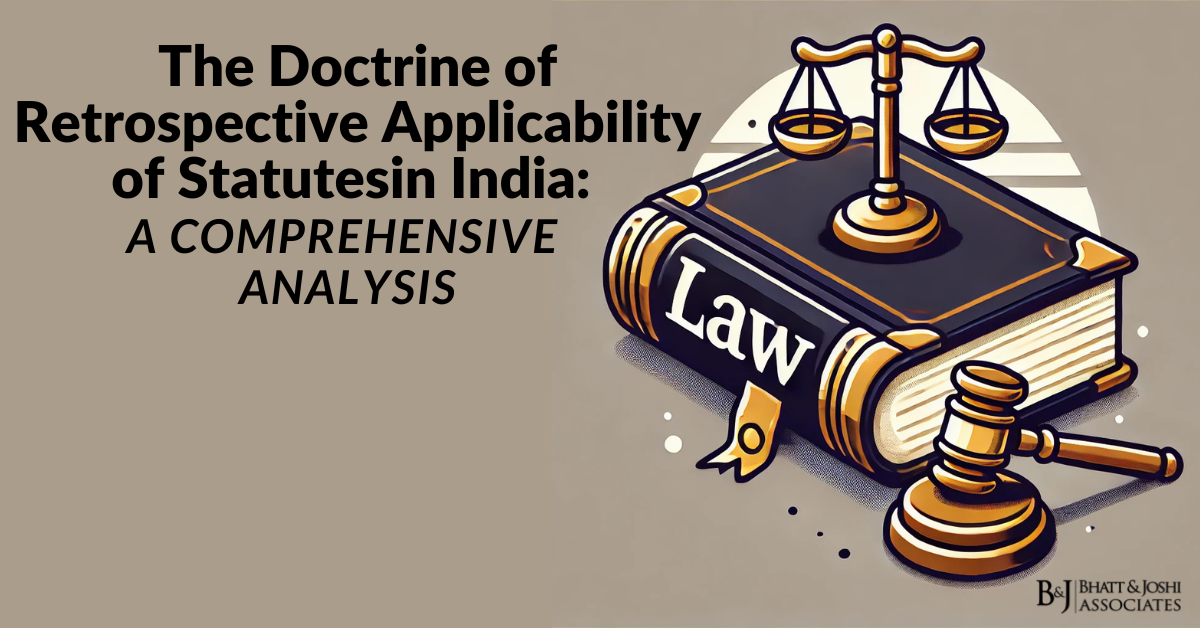Introduction
The Indian government has long grappled with the complex issue of pay fixation for retired personnel who are re-employed in civil services. This topic has garnered significant attention due to its implications on government expenditure, fairness in employment practices, and the utilization of experienced personnel in various sectors of public service. The recent changes in pay fixation rules, particularly those outlined in the Office Memorandum (OM) dated 1.5.2017 issued by the Department of Personnel and Training, Government of India, mark a significant shift in how re-employed pensioners’ salaries are determined. This article aims to provide a comprehensive analysis of these changes, their implications, and how they affect different categories of re-employed pensioners, with a particular focus on the case of ex-servicemen like Manojkumar D. Vaishnav.
Historical Context
To understand the current scenario, it’s crucial to trace the evolution of pay fixation rules for re-employed pensioners in India. Historically, the government has sought to balance two primary objectives: utilizing the expertise of retired personnel and ensuring fiscal prudence. The Central Civil Services (Fixation of Pay of Re-employed Pensioners) Orders, 1986, laid the foundation for many of the principles that continue to guide pay fixation today. These orders established the concept of ‘pay minus pension,’ where a portion of the pension was deducted from the pay fixed on re-employment.
Over the years, various amendments and clarifications were issued to address specific scenarios and challenges. The implementation of successive Pay Commissions further necessitated revisions to these rules. The transition from the 6th Pay Commission to the 7th Pay Commission, in particular, brought about significant changes in the overall pay structure of government employees, which in turn affected the pay fixation of re-employed pensioners.
Key Changes in Pay Structure Terminology as per 7th CPC
One of the most notable changes introduced by the 7th Pay Commission and reflected in the 2017 OM is the shift in pay structure terminology. The previous system, which used terms like “pay scale,” “pay structure,” “grade pay,” and “pay band,” has been replaced with a new system centered around the concept of “Levels” in a revised pay structure.
Under the old system, a re-employed officer might have been placed in Pay Band-3 (15600-39100) with a Grade Pay of 6600. In contrast, the new system designates the same position as Level 11 in the pay matrix. This change is not merely semantic; it represents a fundamental restructuring of how government salaries are conceptualized and calculated.
The new pay matrix is designed to provide more consistency and transparency in pay progression. It eliminates the complexity of multiple pay bands and grade pays, replacing them with a single matrix where each cell represents a specific pay level. This change aims to simplify the pay fixation process and reduce anomalies that existed in the previous system.
Initial Pay Fixation for Re-employed Pensioners: A New Approach
The method of initial pay fixation for re-employed pensioners has also undergone significant changes. Previously, the Central Civil Services (Revised Pay) Rules, 2008 guided this process, with reference to entry pay in the revised pay structure of the re-employed post. The new system, however, refers to Rule 8 of the Central Civil Services (Revised Pay) Rules, 2016 for initial pay fixation.
To illustrate this change, consider the case of a newly re-employed Lower Division Clerk. Under the old system, they might have started at the entry pay of Rs. 7,000 (PB-1) plus a Grade Pay of Rs. 1,900. In the new system, the same position would start at Cell 1 of Level 2 in the pay matrix, potentially resulting in a different starting salary based on the 2016 rules.
This change is particularly significant for individuals like Manojkumar D. Vaishnav, who was re-employed after the implementation of the 7th Pay Commission. The new rules would dictate that his initial pay be fixed according to the level corresponding to his post of Junior Clerk in the revised pay matrix, rather than using the previous system of pay bands and grade pay.
Pay Fixation When Pension is Not Ignored
Another area of significant change is the method of pay fixation in cases where the pension is not fully ignored. The old system used a combination of grade pay and pay band, with a maximum limit. The revised system, however, utilizes the concept of “Level” in the pay matrix, offering a more streamlined approach.
To understand this change, let’s consider an example. Suppose an officer retired with a basic pay of Rs. 70,000. Under the old system, if they were re-employed in a post with a Grade Pay of Rs. 7,600, their pay might have been fixed at Rs. 70,000, but split as Pay Band pay of Rs. 62,400 plus Grade Pay of Rs. 7,600. In the new system, if the same officer is re-employed in a post at Level 12, their pay would be fixed at Rs. 70,000 in that level, provided such a cell exists. If not, it would be fixed at the next higher cell in that level.
This change provides more flexibility in pay fixation and potentially allows for better alignment between the re-employed pensioner’s previous pay and their new position. It’s worth noting that this particular provision may not directly apply to non-commissioned officers like Vaishnav, as their entire pension is typically ignored for pay fixation purposes.
Redefining Basic Pay for Re-employed Pensioners
The definition of basic pay has also been revised, moving away from the previous composite structure. In the old system, basic pay was calculated as the sum of pay in the pay band plus grade pay. For instance, a basic pay of Rs. 56,100 might have been composed of Pay Band pay of Rs. 48,500 plus Grade Pay of Rs. 7,600.
The new system simplifies this concept. Basic pay is now defined as the pay drawn in the prescribed Level in the Pay Matrix. Using the same example, a basic pay of Rs. 56,100 would simply be the figure in the cell of the appropriate Level in the Pay Matrix. This change streamlines the pay structure and makes it easier to understand and implement.
Introduction of Maximum and Minimum Pay Limits
A notable addition in the revised rules is the introduction of specific provisions for maximum and minimum pay limits. This new rule addresses scenarios where the pay of the re-employed post significantly differs from the pensioner’s last drawn pay.
For example, consider an officer who retired with a basic pay of Rs. 1,50,000. If they are re-employed in a post where the maximum of the Level is Rs. 1,40,000, their pay would be fixed at Rs. 1,40,000, even though it’s lower than their last drawn pay. Conversely, if they are re-employed in a post where the minimum of the Level is Rs. 1,60,000, their pay would be fixed at Rs. 1,60,000, despite it being higher than their last drawn pay.
This provision ensures that the re-employed pensioner’s pay aligns with the prescribed limits of their new post, regardless of their previous pay. It addresses potential disparities that could arise from significant differences between the pay scales of the previous and new positions.
Changes in Pension Ignorable Amount
One of the most impactful changes for certain categories of re-employed pensioners is the increase in the ignorable part of pension. Previously, for commissioned officers and Group ‘A’ civilian pensioners, the first Rs. 4,000 of pension was ignored when fixing pay on re-employment. The revised rules have significantly increased this amount to Rs. 15,000.
To illustrate the impact of this change, consider a retired Group ‘A’ officer with a monthly pension of Rs. 50,000 being re-employed. Under the old system, Rs. 46,000 (50,000 – 4,000) would have been deducted from the pay fixed on re-employment. With the new rules, only Rs. 35,000 (50,000 – 15,000) would be deducted, potentially resulting in a higher take-home pay for the re-employed pensioner.
It’s important to note, however, that this provision does not apply to non-commissioned officers like Manojkumar D. Vaishnav. For such individuals, the entire pension continues to be ignored for pay fixation purposes, as was the case under the previous rules.
Implications for Different Categories of Re-employed Pensioners
The revised rules of the 7th Pay Commission have varying impacts on different categories of re-employed pensioners. For commissioned officers and civilian pensioners who held Group ‘A’ posts, the increase in the ignorable portion of pension may result in more favorable pay fixation. This change acknowledges the higher levels of responsibility and pay scales associated with these positions.
For non-commissioned officers and those who held posts below Group ‘A’, the rules maintain the previous stance of ignoring the entire pension for pay fixation. While this might seem less advantageous compared to the treatment of higher-ranking officers, it’s important to note that their entire pension remains untouched and is received in addition to the pay of the re-employed post.
The case of ex-combatant clerks and ex-storemen, which is at the heart of Manojkumar D. Vaishnav’s case, presents a unique scenario. These individuals have historically been granted certain benefits in terms of pay protection and service continuity when re-employed in similar civil posts. The 2017 OM does not directly address this specific category, leaving room for continued debate and potential legal challenges.
Analysis of Manojkumar D. Vaishnav’s Case
Considering the specifics of Manojkumar D. Vaishnav’s case in light of the 2017 OM, several points emerge. As a non-commissioned officer (Naik) re-employed as a Junior Clerk, Vaishnav’s entire pension should be ignored for pay fixation purposes. His initial pay should have been fixed at the appropriate level in the pay matrix corresponding to the post of Junior Clerk, without any deduction of pension.
The OM’s stance on not providing pay protection for the scale of pay held prior to retirement aligns with the government’s position in Vaishnav’s case. This aspect potentially weakens Vaishnav’s argument for pay protection based on his army service.
However, the OM does not specifically address the distinction between ex-combatant clerks/storemen and other non-commissioned officers, which is the crux of Vaishnav’s case. The historical treatment of ex-combatant clerks and storemen, granting them certain benefits due to the similarity of their duties in military and civil posts, is not explicitly covered in the 2017 OM.
The absence of specific provisions for this category in the OM leaves room for interpretation and potentially supports the government’s argument that such distinctions are based on reasonable classification. However, it also means that Vaishnav’s case cannot be dismissed solely based on this OM and would require consideration of other relevant rules and legal principles.
Challenges and Considerations
The implementation of these revised rules presents several challenges and considerations. Firstly, the transition from the old system to the new pay matrix requires careful calculation and potential re-adjustment of pay for those who were re-employed before 2016 but continued in service beyond that date.
Secondly, the distinction made between different categories of pensioners, particularly the higher ignorable pension amount for commissioned officers and Group ‘A’ posts, may be seen as perpetuating a hierarchy in the treatment of re-employed pensioners. This could potentially lead to grievances from those in lower pay scales.
Thirdly, the case of specialized categories like ex-combatant clerks and storemen highlights the need for more nuanced rules that can accommodate the unique circumstances of different groups of ex-servicemen. The absence of specific provisions for such categories in the OM may necessitate further clarifications or amendments in the future.
Future Outlook and Potential Areas for Reform
As the implementation of these rules progresses, several areas may require further attention and potential reform. One key area is the need for greater clarity on how these rules apply to various specialized categories of ex-servicemen. This could involve developing more detailed guidelines for different categories based on the nature of their previous service and its relevance to their re-employed position.
Another potential area for reform is the consideration of a more unified approach to pay fixation for all re-employed pensioners, regardless of their previous rank or position. While the current system attempts to balance various factors, a simplified, more equitable approach could potentially reduce complexity and perceived disparities.
The government may also need to consider the long-term fiscal implications of these rules, particularly in light of increasing life expectancy and the potential for longer periods of re-employment. Balancing the need to utilize experienced personnel with the need for fiscal prudence will remain an ongoing challenge.
Conclusion: Evolving Rules for Pay Fixation for Re-employed Pensioners
The 2017 Office Memorandum on pay fixation for re-employed pensioners represents a significant evolution in how India manages the complex issue of utilizing retired personnel in government service. The shift to a new pay matrix system, changes in pension treatment, and redefinition of basic pay all contribute to a more streamlined and potentially more transparent system.
However, as the case of Manojkumar D. Vaishnav illustrates, there remain areas where the rules may not fully address the nuances of different categories of ex-servicemen. The balance between recognizing the unique circumstances of various groups and maintaining a fair and consistent system for all re-employed pensioners continues to be a challenge.
As India moves forward, ongoing dialogue between policymakers, legal experts, and representatives of various categories of pensioners will be crucial. This will ensure that the system of pay fixation for re-employed pensioners continues to evolve in a manner that serves both the interests of the individuals involved and the broader needs of efficient and effective governance.
The complexities surrounding this issue underscore the importance of continuous review and refinement of policies. As societal needs change and new challenges emerge, the system of pay fixation for re-employed pensioners will likely continue to be an area of active policy development and debate in the years to come.














